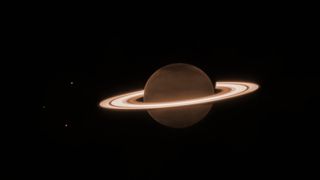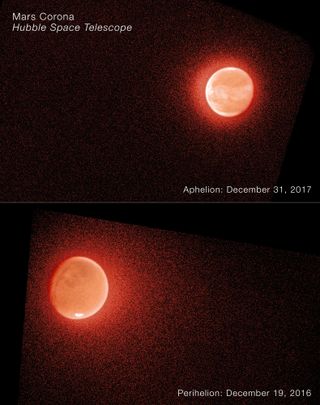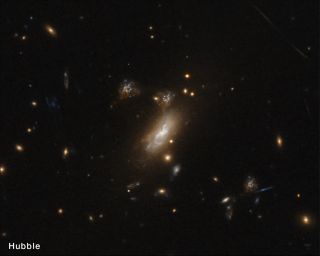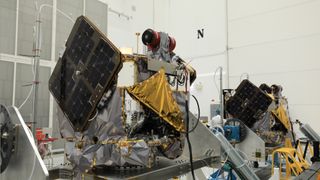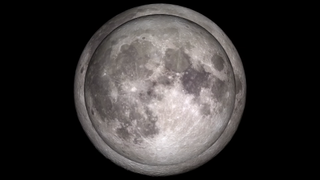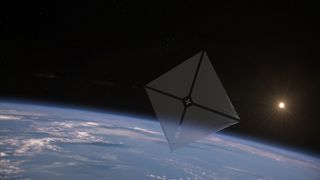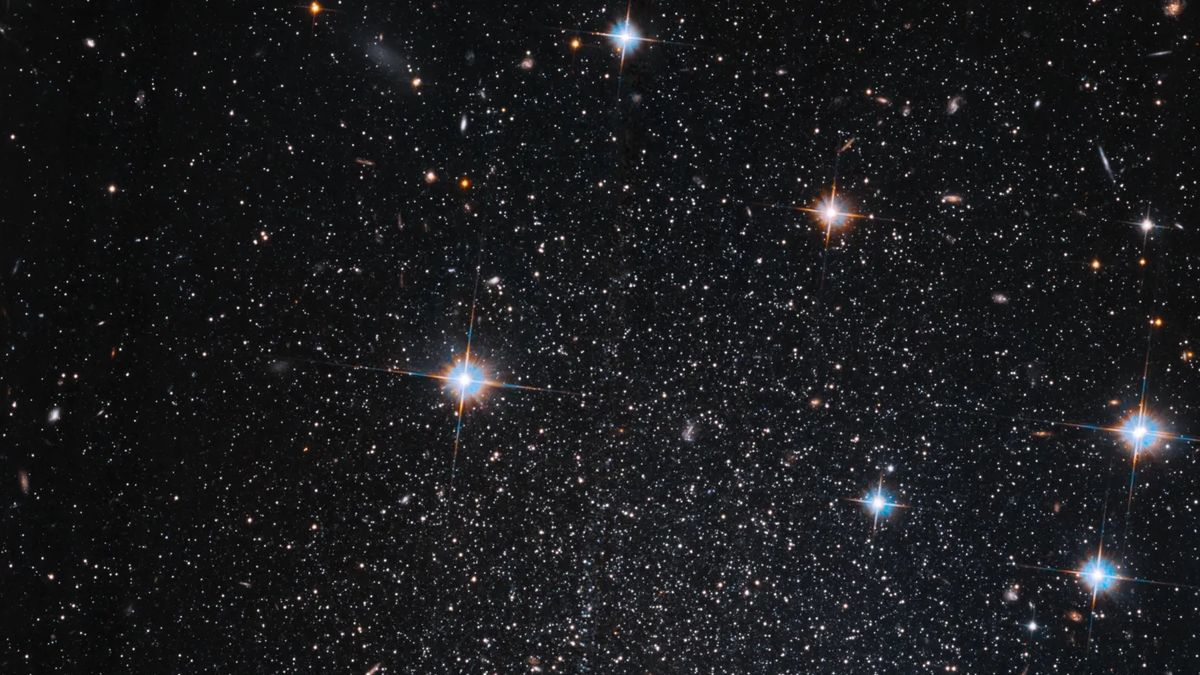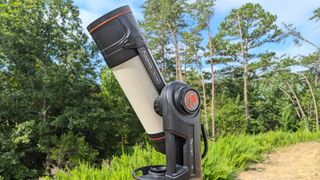Saturn will reach opposition this weekend when the ringed planet and the sun are directly opposite of each other in the sky. Just after midnight tonight, Saturn will appear at its biggest and brightest in the night sky. This is because Earth will be positioned directly between Saturn and the sun, offering stargazers a spectacular sight — and a chance to catch a glimpse of the planet’s rings before they turn edge on and “disappear” from view. Appearing in the constellation Aquarius, Saturn will be visible for much of the…
Read MoreCategory: Solar System
Our solar system
Mars leaks faster when closer to the sun
Seasonal changes can have a dramatic effect on how quickly Mars loses its water to space, a joint study between the Hubble Space Telescope and NASA’s Mars Atmosphere and Volatile Evolution (MAVEN) mission has shown. Over three billion years ago, Mars was warm and wet, with large bodies of water on its surface and a thicker atmosphere. Today, however, Mars is desolate, cold and dry. So, what happened to all the water? “There’s only two places water can go,” John Clarke of the University of Boston said in a statement.…
Read MoreJames Webb Space Telescope zooms in on giant question mark in space (image)
Astronomers often have more questions than answers about the universe — and the universe, in turn, has asked its own question. Quite literally. Last year, the James Webb Space Telescope fortuitously spotted the unmistakable shape of a question mark across the sky. The uncanny feature was captured lurking at the bottom of an image of a pair of forming stars in the Vela constellation roughly 1,470 light-years from Earth. The picture soon went viral on social media sites, prompting a myriad of guesses of its nature, from a sign of…
Read MoreNASA delays ESCAPADE Mars launch on Blue Origin’s giant New Glenn rocket to 2025 to avoid potential cost overruns
Blue Origin’s huge New Glenn rocket won’t debut next month after all. New Glenn, the company’s partially reusable new heavy lifter, had been scheduled to launch NASA’s twin ESCAPADE Mars probes from Cape Canaveral Space Force Station in Florida during an eight-day window that opens on Oct. 13. But that’s no longer the plan. “The agency’s decision to stand down was based on a review of launch preparations and discussions with Blue Origin, the Federal Aviation Administration and Space Launch Delta 45 Range Safety Organization, as well as NASA’s Launch Services Program…
Read MoreA partial lunar eclipse of the Harvest Moon Supermoon is coming. Here’s everything you need to know
The Full Harvest Moon of September 2024 will be a special one. All full moons are impressive sights on their own, but this month’s Full Harvest Moon will be especially noteworthy. In addition to being a slightly larger-than-average “supermoon,” September’s full moon will also experience a partial lunar eclipse when it rises on the evening of Sept. 17. The partial lunar eclipse will be visible from most of North America, all of South America, Europe, all but the easternmost parts of Africa, western portions of Asia and Russia, and parts…
Read MoreWatch eerie 1st teaser for Hulu’s ‘Alien: Earth’ TV series (video)
Alien: Earth | Official Teaser | Sydney Chandler, Alex Lawther, Timothy Olyphant | FX – YouTube Watch On “Alien: Romulus” still has us all shuddering in our shoes, with its infested space station locale and nightmarish nostalgic callbacks to Ridley Scott’s original 1979 film. But that’s not the only xenomorph on the block, as “Fargo” and “Legion” creator Noah Hawley is primed to bring the iconic extraterrestrials to our own Big Blue Marble in “Alien: Earth,” a new ongoing series produced by FX that will be available exclusively on Hulu. …
Read MoreNASA spacecraft captures 1st photo of its giant solar sail while tumbling in space
On April 23, NASA launched a solar sail protype to orbit around our planet — a piece of technology that could very well revolutionize the way we think about spacecraft propulsion. Then, on Aug. 29, the agency confirmed this sail successfully unfurled itself in outer space. Yet, we still didn’t have official photographic evidence of this for some time. Now, as of Sept. 5, we indeed do. NASA has released the first image of the open solar sail, formally called the Advanced Composite Solar Sail System, and stated that the…
Read MoreChinese astronauts study ancient microbes aboard Tiangong space station (video)
Chinese astronauts aboard the Tiangong space station are studying anaerobic archaea in an experiment to determine if some of Earth’s early forms of life can handle a simulated cosmic environment. Shenzhou 18 crewmembers — commander Ye Guangfu and crewmates Li Cong and Li Guangsu — have been aboard the Tiangong space station since late April and have been busy conducting spacewalks and running experiments. That scientific work includes research on space radiation damage and adaptability of anaerobic archaea, as a newly released video shows. China’s Shenzhou 18 astronauts perform research…
Read MoreHubble Telescope spies a very sparkly mini-galaxy (image)
New images released by NASA’s Hubble Space Telescope are of the Pegasus Dwarf spheroidal galaxy, also known as Andromeda VI. Pegasus is located in the Andromeda Galaxy, also called Messier 31, which is the Milky Way’s closest neighbour at about 2,480,000 light-years away from Earth. As such, Andromeda is one of the few galaxies visible to the naked eye — best observed in November. The images were captured as part of a re-examination of the entire Andromeda system, meant to gather further information to answer long-standing questions related to dark…
Read MoreCelestron Origin Intelligent Home Observatory smart telescope review
The Celestron Origin Intelligent Home Observatory is Celestron’s first smart telescope that brings the wonder of deep sky imaging into the palm of your hand. This makes it easier than ever to take your own photos of nebulas, galaxies and more with just a few seconds of setup. The telescope and built-in camera are controlled with an easy-to-use app that takes all the fuss out of locating and photographing distant celestial spectacles. Priced at $3,999 (£3,069 GBP), the Celestron Origin isn’t within everyone’s budget. This also isn’t a grab-and-go, do-everything…
Read More